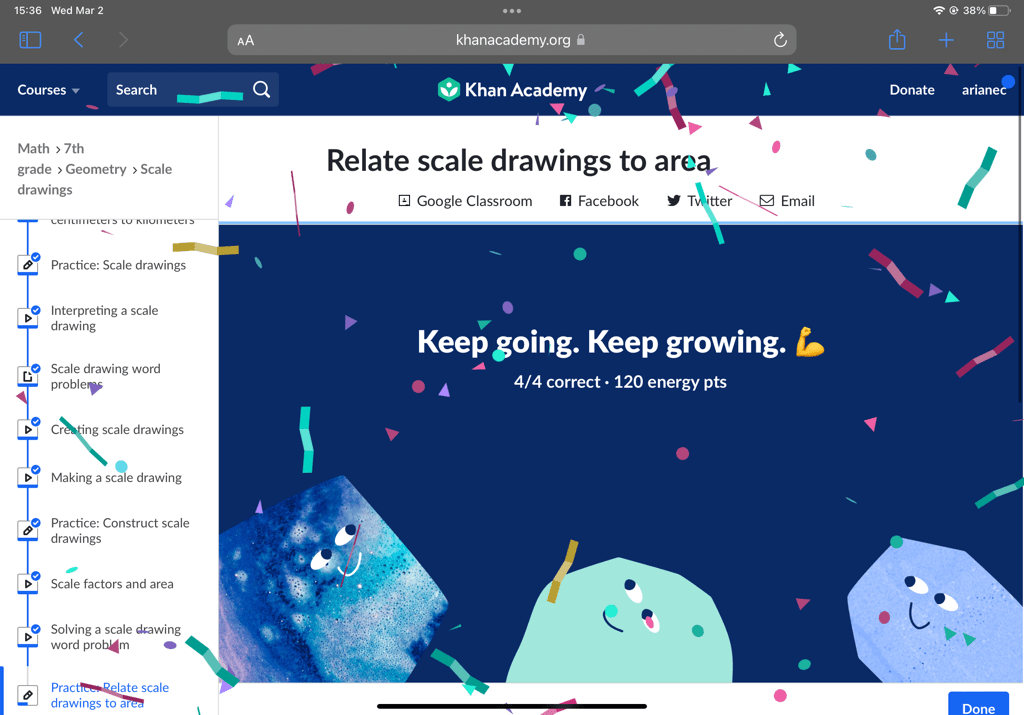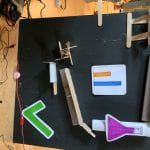Metaphor Machines: the latest torture method I have been subjected to. Thankfully, I somehow managed to survive our most recent Scimatics project.
A lot of the focus during this project was placed upon learning about electricity, creating a Rube Goldberg machine, and using math to accurately create a scale diagram. If you’re wondering what a Rube Goldberg machine is, it is essentially a machine where one component triggers the rest of the machine, propelling it into motion… somewhat like a domino or butterfly effect.
How can we represent the scientific method?
In order to achieve a level of understanding in order to answer the aforementioned question, we were also introduced to the topic of electricity, the inner workings behind batteries, Ohm’s law, and electrical circuits. Let’s get down to business!
🔨 Junkyard Wars
At the beginning of this project, we participated in a Junkyard Wars activity, in which we created a small Rube Goldberg machine. I worked with Claire, Sabrina, and Declan for this activity. Given the limited time we had, this task was quite stressful. In the end, our machine needed a little nudging in order to get it to work, which was a little disappointing. In the moment, I had felt pretty badly about it. However, now that it’s been over three months since we participated in this activity, it’s surprisingly easy not to care.
💡Electricity Labs
The Electricity labs were my absolute favourite part of this project. We were given opportunities to actually experiment and build our own circuits. This also provided us with an opportunity to truly incorporate Ohm’s law into our work.
At times, all the wires confused me, and I didn’t know where to attach what. Nonetheless, it all worked out thanks to my group members, Sabrina, Makenna, and Ines. We also worked together later in the project to build our final machine.
Lab 1:
Lab 2:
Lab 3:
🎓 Khan Academy.. Yet Again
If you know anything about me, you’re likely aware I am atrocious at math. I used to consider myself to be pretty good at it, then highschool happened and I realized how little I actually know about math. We completed a Khan Academy quiz about scale drawings in order to prepare us for making the blueprint for our Rube Goldberg machine. It took many tries, much frustration, and endless confusion… though I survived in the end. Unfortunately, my sanity did not.
✏️ The Machine: Drafting & Planning
 Now that we more or less understood how to make scale diagrams, we had to make an individual blueprint to scale to brainstorm what we wanted to include in our Rube Goldberg machines.
Now that we more or less understood how to make scale diagrams, we had to make an individual blueprint to scale to brainstorm what we wanted to include in our Rube Goldberg machines.
Then, I worked with my group members once more to combine our ideas into a final draft. Here it is!
⚙️ Our Final Metaphor Machine!
After a lot of trial and error, we finally created our wonderful machine. It took a lot of troubleshooting, and sometimes things were rather finicky. However, we managed in the end, and I am so immensely happy with that! I’m admittedly not the best STEM orientated person, so this was a huge achievement for myself personally.
I honestly received a lot more help from Sabrina, Makenna, and Ines than I had expected. It was genuinely cool to have people who helped out where they could. I definitely could not have done it without them!
✅ Curricular Competencies
- Questioning and Predicting: Demonstrate a sustained intellectual curiosity about a scientific topic or problem of personal interest.
In particular, this understanding was demonstrated through my perseverance at doing my best on the Khan academy quiz, the lab experiments, and the actual final machine itself. I found myself significantly more interested in these aspects of the project than I had previously anticipated myself to be, which I feel pretty good about.
- Reasoning and Analyzing: Estimate reasonably.
This was shown in our blueprints, when we created our scale diagrams. I honestly really enjoyed making the blueprints, since colour coding and making nice neat lines are right up my alley. The “scale diagram” part was more confusing, though I think I managed in the end!
- Planning and Conducting: Select and use appropriate equipment, including digital technologies, to systematically and accurately collect and record data.
This was definitely represented the most in the lab experiments we took part in! I absolutely love recording data, and I personally feel that this was one of the more interesting aspects of the project. I think I did well in this regard.
- Scientific Communication: Formulate physical or mental models to describe a phenomenon.
This was specifically shown in our Rube Goldberg Machine, when we used different decorations and machinery to represent the different steps of the scientific method.
🌱 Conclusion
To answer the driving question, we can represent the scientific method through making a machine in which each part is a metaphor for each process. It definitely wasn’t easy, and required a lot of teamwork… but it was worth getting to see the machine work in the end. Thanks for reading!

















Leave a Reply